There is something magical about the sight of neon against the backdrop of an evening sky.
In its natural state, neon gas is colourless, but when placed in a sealed glass tube and electrified, it will emit a luminous, coloured light. Some other rare gases will do the same. Helium, for example, turns a pinkish-red, while mercury takes on a bright blue glow.
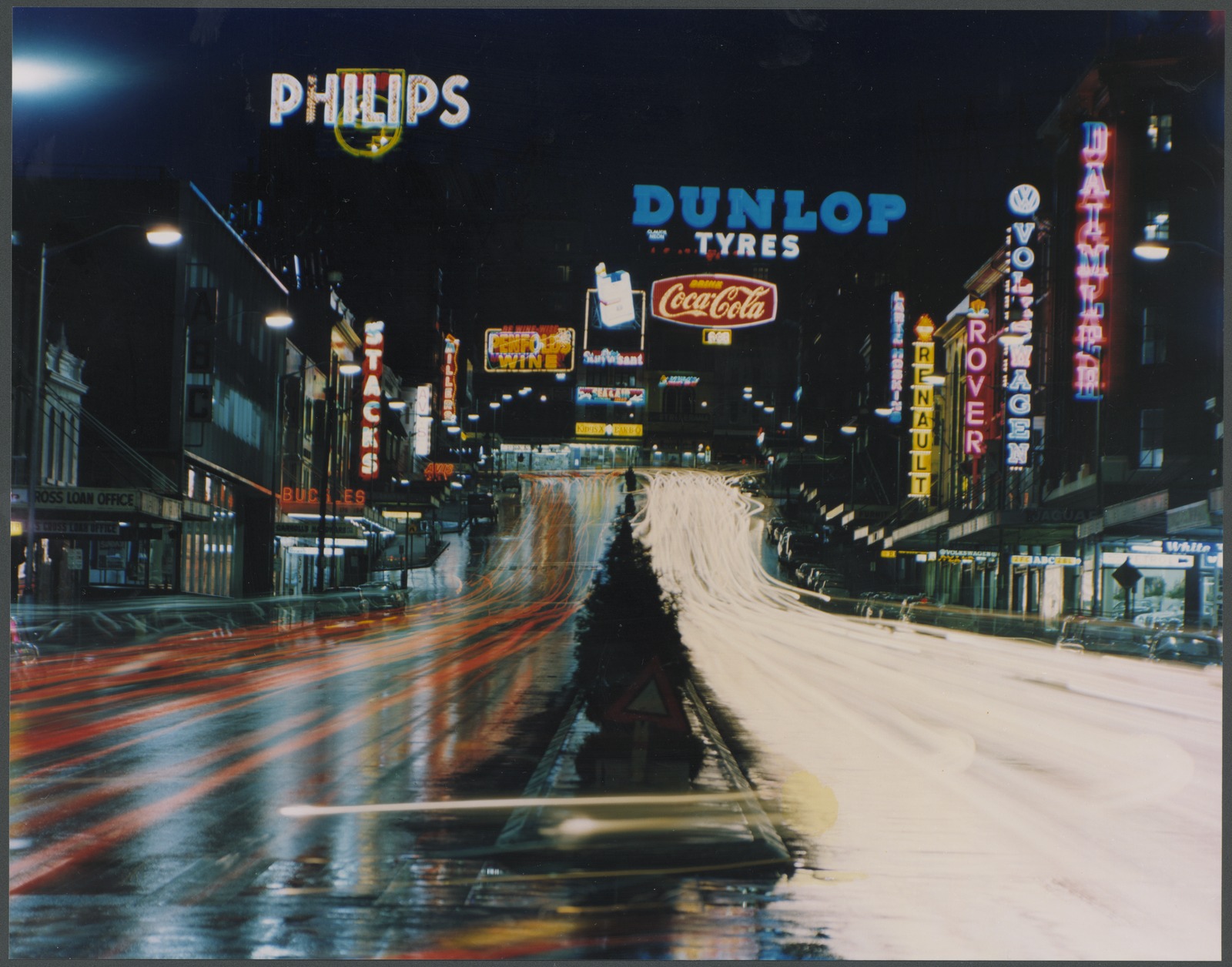 Night view of William Street, Sydney, looking towards King’s Cross, 1965. Photo by Wolfgang Sievers. This work is in copyright; H2002.99/228
Night view of William Street, Sydney, looking towards King’s Cross, 1965. Photo by Wolfgang Sievers. This work is in copyright; H2002.99/228
Before the advent of neon, outdoor advertising signs were either floodlit billboards or light bulb signs, but neither of these alternatives were really ideal. A high wattage was required to achieve the requisite brightness, and bulb lighting in particular, was very expensive.
One of the best known signs using bulb lighting in Melbourne was the illuminated sign above MacRobertson’s factory building in Fitzroy.
Around 1100 electric bulbs were used to power it, and it could be seen from as far away as Camberwell and Canterbury.1
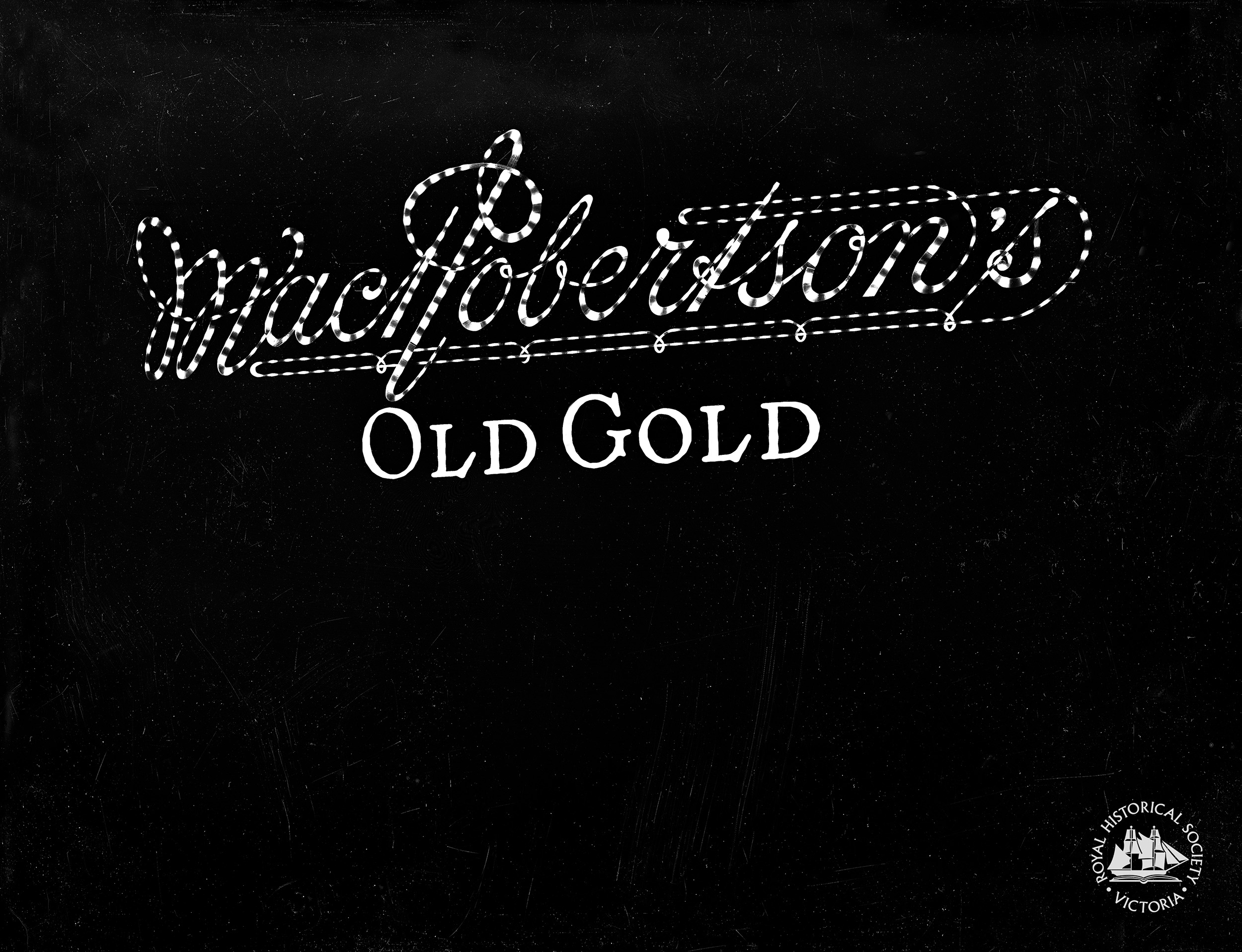 Illuminated sign as it appeared over MacRobertson’s factory in Fitzroy at night. Photo courtesy of Royal Historical Society of Victoria, GN-MAC-076
Illuminated sign as it appeared over MacRobertson’s factory in Fitzroy at night. Photo courtesy of Royal Historical Society of Victoria, GN-MAC-076
The concept of neon signage first arrived in Australia in 1924, via a patent application by French inventor Georges Claude for his neon illuminated advertising tubes.2 3 One year later, a ‘Mr Hack’ of Collins Street applied for a patent that built on Claude’s existing design.4 By the late 1920s, neon signs were beginning to appear in Melbourne, with The Age noting approvingly: ‘they strike a new and attractive note of colour among the night illuminations of the city.’ (The Age, 18 May 1929, p 6)
 Detail from patent 16039/24, granted to Georges Claude and Jean Marie Edoard de Beaufort, Engineers of Boulogne-sur-Seine, 1924
Detail from patent 16039/24, granted to Georges Claude and Jean Marie Edoard de Beaufort, Engineers of Boulogne-sur-Seine, 1924
The following decade, interest in outdoor neon advertising exploded. Many of the signs proved wildly popular, with some eventually becoming part of urban folklore. We take a look back at some of the highlights.
Allen’s Sweets sign
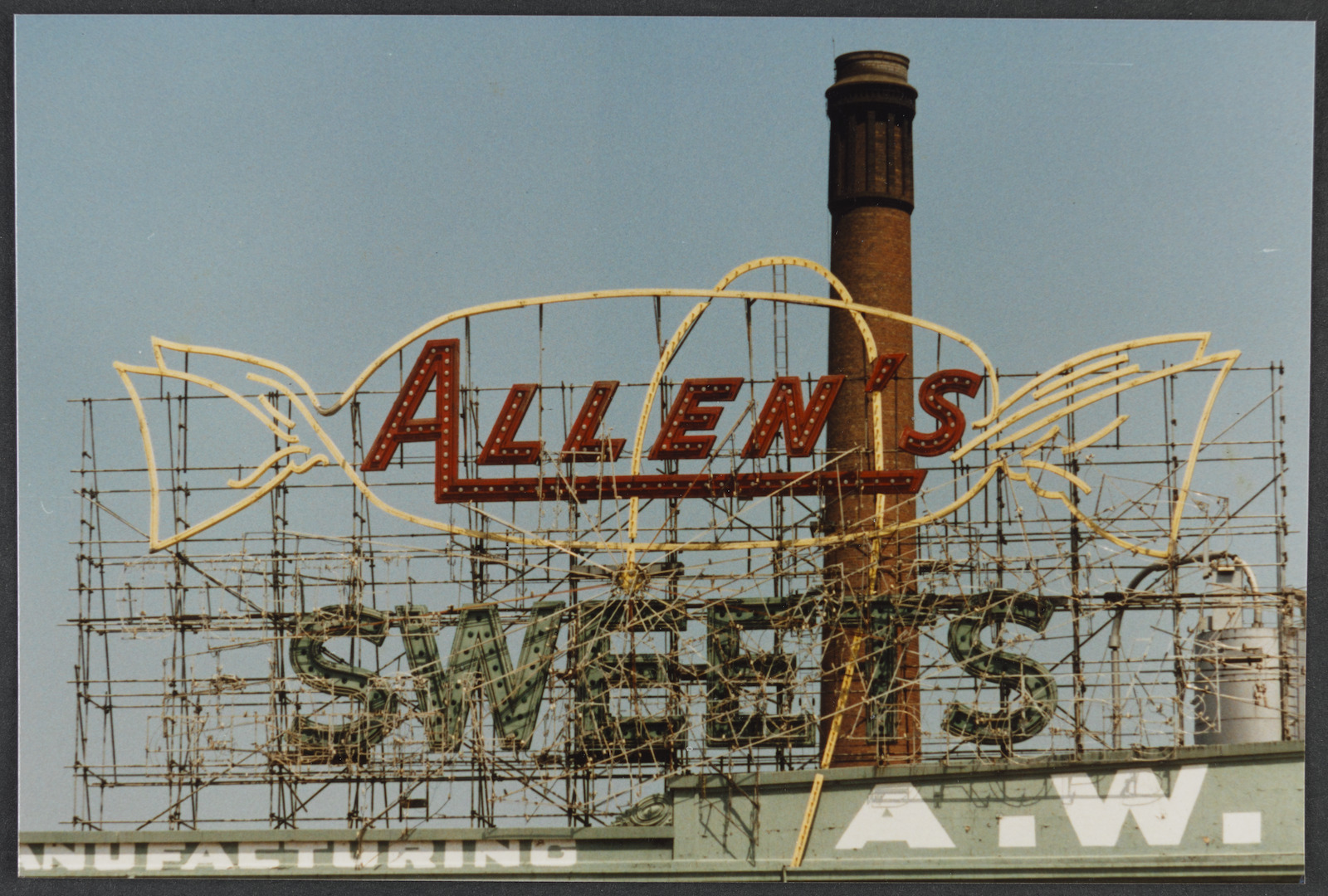 Allen’s neon sign, 1986/1987. Photo by Erica Downard. This work is in copyright; H2011.71/224
Allen’s neon sign, 1986/1987. Photo by Erica Downard. This work is in copyright; H2011.71/224
The Allen’s sign sat atop the Allen’s Sweets factory, which was located on the south bank of the Yarra River, opposite Flinders Street Station. The sign went through various incarnations over time. The final version involved three different sequences – an advertisement for Anticol cough lozenges, an ad for Kool Mints and a skyrocket starburst.
The sign was popular with the Victorian public, but a public campaign to save it failed, and when the factory was demolished in 1987, the sign went too.
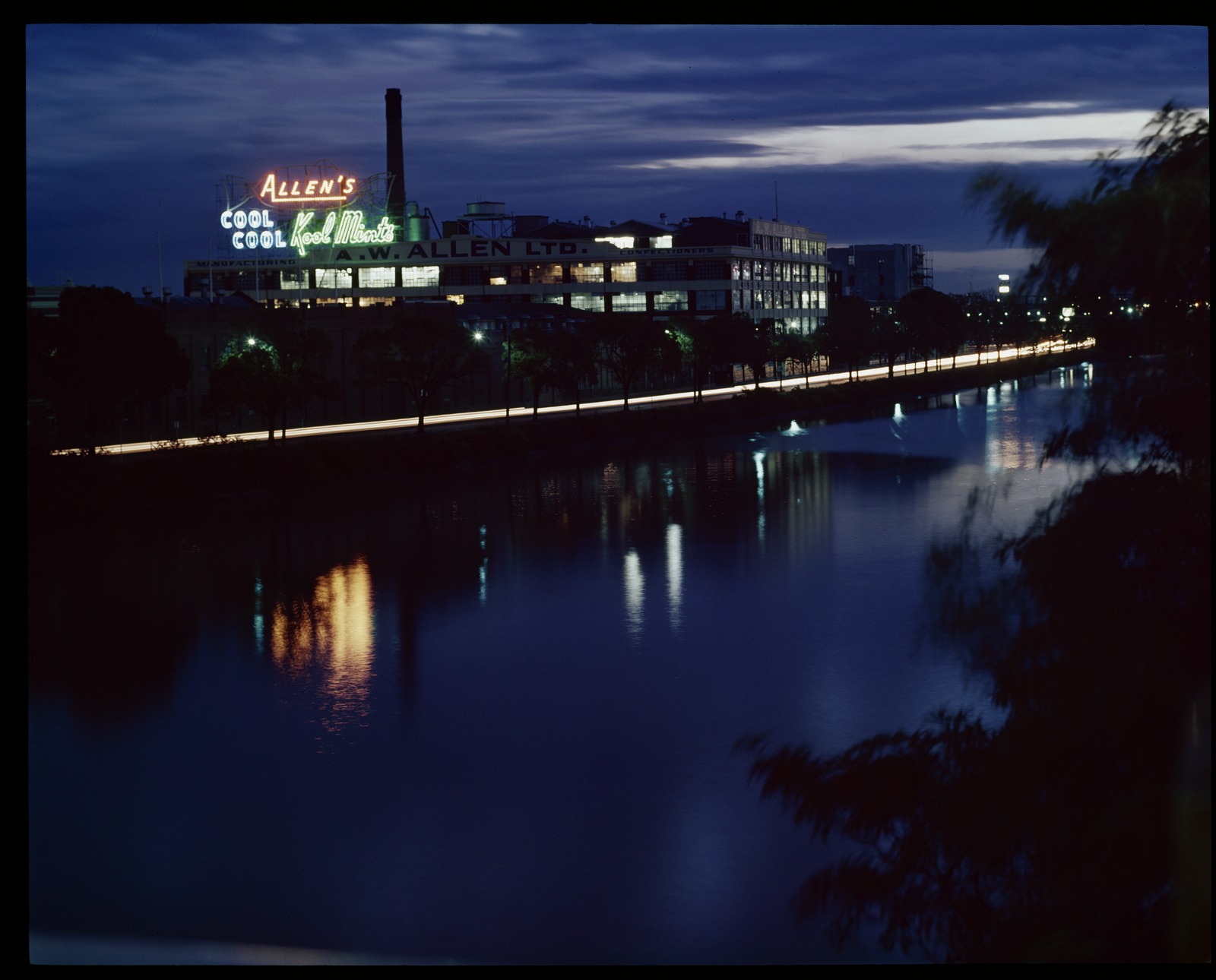
Looking across the Yarra River to factories and Allen’s neon sign, at night, South Melbourne, 1972. Photo by Mark Strizic. This work is in copyright; H2011.55/1362
State Savings Bank, Abbotsford
The State Savings Bank sign was erected on top of a building on the corner of Hoddle and Victoria Streets on 8 October, 1957. The design depicted a smiling young girl dropping coins into a money box. The sign was rented from Claude Neon Lights (Vic) Ltd at £40 per month for five years until it started malfunctioning. It was finally removed in 1964.
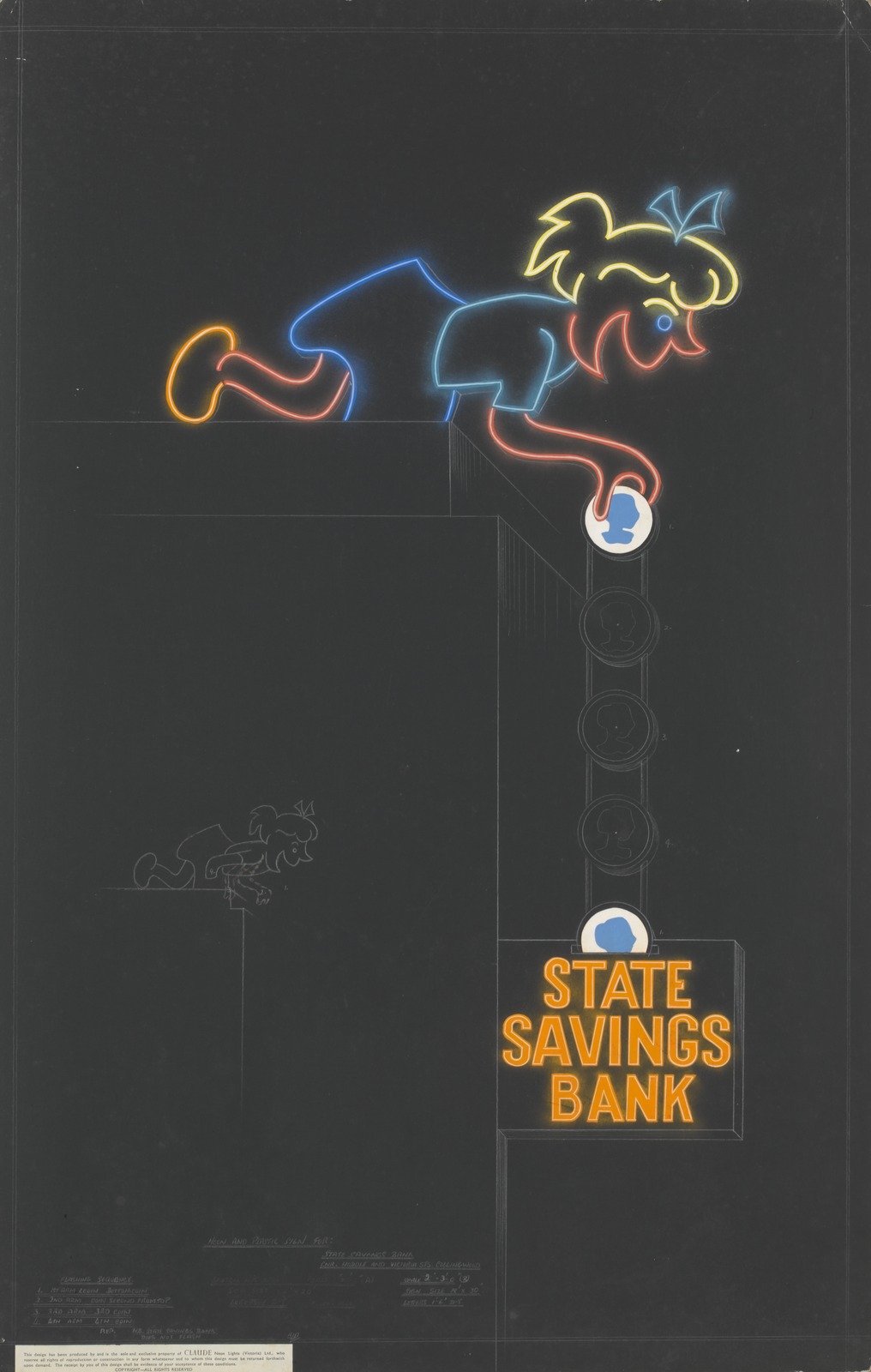 Artwork for a neon sign for the State Savings Bank, Abbotsford, [1957]. This work is in copyright; H95.83/9
Artwork for a neon sign for the State Savings Bank, Abbotsford, [1957]. This work is in copyright; H95.83/9
Nylex Clock
The Nylex clock is an example of what was known as a ‘sky sign’, many of which emerged in the 1930s. The sign was erected on top of the Barrett Burston silos, overlooking Punt Road, in 1967. It was said to be so expensive to install that for a while, it was known as ‘Derham’s folly’ ( a reference to Peter Derham, who was general manager of Nylex at the time).5
 Night shots of Melbourne, [between 1960 and 1969]. Photo by Maggie Diaz. This work is in copyright; H2011.62/159a
Night shots of Melbourne, [between 1960 and 1969]. Photo by Maggie Diaz. This work is in copyright; H2011.62/159a
In addition to its distinctive typography, the Nylex sign features an electronic clock and an LED thermometer to keep Melbournians informed about the outdoor temperature. The Nylex clock sign is one of several neon signs to have been enshrined in our popular culture, with Australian singer-songwriter Paul Kelly referencing the sign in his song, Leaps and Bounds:
And way up on high
The clock on the silo
Says eleven degrees
The Nylex clock is one of numerous neon signs to have survived in Richmond – a legacy of the area’s industrial history. Others include: the Skipping Girl, Slade, Pelaco, and the neon rainbow sign immortalised in author Jennifer Down’s novel, Our Magic Hour.
Spaghetti neon
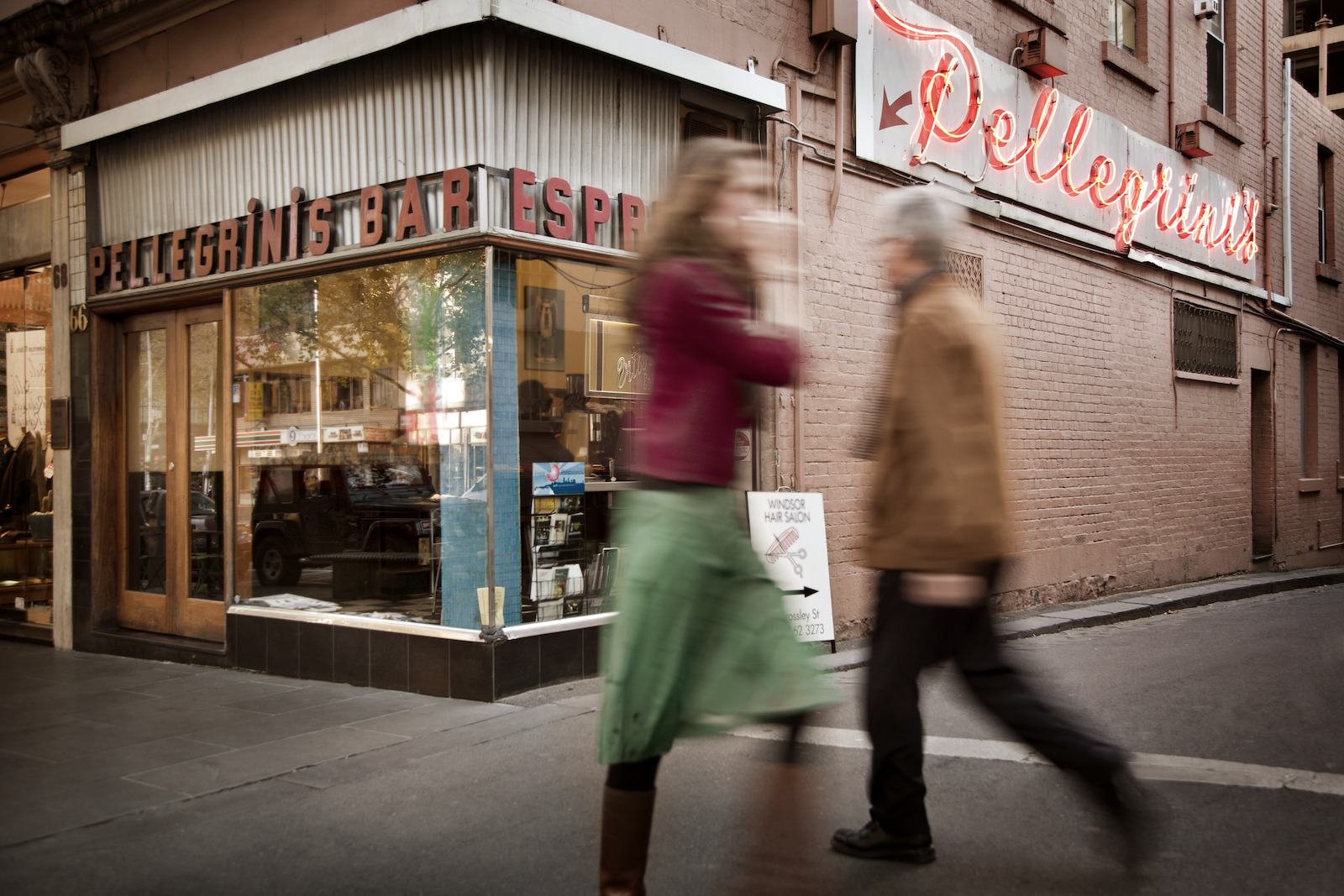 Pellegrini’s, Melbourne, established 1954, 2011. Photo by Hilary Bradford. This work is in copyright; H2011.165/17
Pellegrini’s, Melbourne, established 1954, 2011. Photo by Hilary Bradford. This work is in copyright; H2011.165/17
After the advent of World War II, Australia experienced a sharp upturn in European immigration. Italian restaurants and cafes, already a mainstay of the CBD and Carlton, began to appear in the broader suburbs, and with them, their neons in cursive script. So well-known is the Italians’ penchant for flowing neon tubing that it even has a name. It’s called ‘spaghetti type.’6
 Famous caf?, Mario’s, Brunswick St., Fitzroy, Melbourne, [2001]. Photo by Rennie Ellis. This work is in copyright; H2011.150/1565
Famous caf?, Mario’s, Brunswick St., Fitzroy, Melbourne, [2001]. Photo by Rennie Ellis. This work is in copyright; H2011.150/1565
The decline of neon
So what is it about neon that people find so endearing? In a 1975 study, the Outdoor Advertising Association of Australia (OAAA) posited that:
[I]t seems that for most people … illuminated signs … contribute to the character of a city … Partly it is a symbolic thing. It relates to special features of a city, which to some extent become identified with that city and … in mental shorthand form, use them to think and feel emotionally about those cities.7
Despite the Victorian public’s love affair with neon, the second half of the 20th century saw its gradual decline. Metropolitan planning schemes became more rigorous, decreasing the number of permitted neons.8 At the same time, contractual complications around the leasing of ‘air rights’ saw signs removed once a company relocated. The number of companies capable of servicing the signs also declined.9
In spite of these developments, many of Melbourne’s remaining neon signs have achieved iconic status. They are part of our city’s urban landscape, and a magical presence in our winter skies.
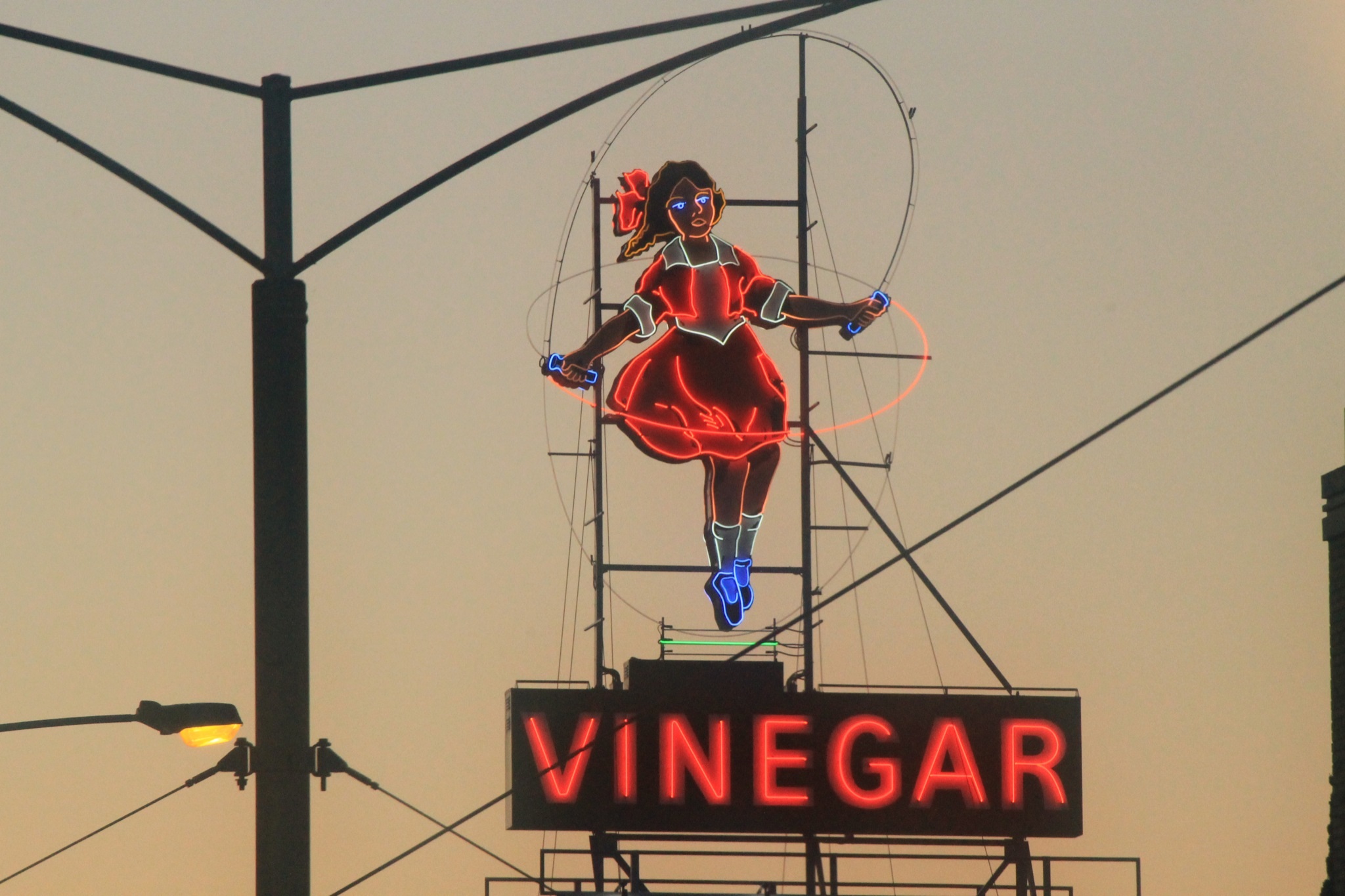
‘Skipping girl!’ by Leni McPoopies is licensed under CC BY-NC-ND 2.0
Further reading
Banham, S & Poynor, R, 2017, Characters: cultural stories revealed through typography, 2nd edn, Thames & Hudson Australia, Port Melbourne, Vic; State Library of Victoria, Melbourne, Vic
References
- Australasian Electrical Times, 1922, ‘Large electrical sign in Melbourne’, Australasian Electrical Times, 27 July, p 387
- Claude, G & de Beaufort, JME, 1924, A device for feeding rarefied gas tubes and particularly neon tubes intended for lighting and illuminated advertising, Patent 16038/24, Australian Industrial Property Organisation, Melbourne
- Claude, G & de Beaufort, JME, 1924, Process for the shaping of glass tubes particularly rarefied gas tubes intended for lighting and illuminating advertising, Patent 16039/24, Australian Industrial Property Organisation, Melbourne
- Hack, 1925, Vacuum tube illuminating device, Patent 25530/25, Australian Industrial Property Organisation, Melbourne
- Banham, S & Poynor, R, 2017, Characters : cultural stories revealed through typography, 2nd edn, Thames & Hudson Australia, Port Melbourne, Vic; State Library Victoria, Melbourne, Vic, p 149
- As above, p 87
- Cited in Banham, S & Poynor, R, 2017, Characters : cultural stories revealed through typography, 2nd edn, Thames & Hudson Australia, Port Melbourne, Vic; State Library Victoria, Melbourne, Vic, p 131
- Heritage Alliance, 2001, Historic electric signage in Victoria: A study of historic illuminated signs prepared for Heritage Victoria and the City of Yarra, Heritage Alliance, North Melbourne, Vic, p 15, viewed 20 June 2022, <https://www.yarracity.vic.gov.au/-/media/files/ycc/the-area/heritage/historic-electric-signage-in-victoria-2002.pdf?la=en>
- As above


What a fascinating article Sarah. So much technological detail – I had no idea how intricate and expensive neon signs were!
I remember Melbourne’s signs with great nostalgia.
I do hope Heritage Victoria has them listed – it would be such a shame to lose what we have left.
I remember the Allen’s sign with its vivid shower of shining sweets. It was wonderful.
I also loved seeing the great bright white Polar Bear from the Broadmeadows to Sandringham line train – always an absolute delight. The bear was advertising the delicious Sennitt’s Ice Cream. His hand holding an ice cream went gradually up as his crimson red tongue came down for a luscious lick. A joy.
The Glaciarium ice rink could also be seen. It was pulled down before I could fulfil my childhood dream of skating there.
I completed my Apprenticeship as a 1st class Sheetmetal Worker at Claude Neon when they were located in Ascot Vale and worked on the Allens signs and many more.